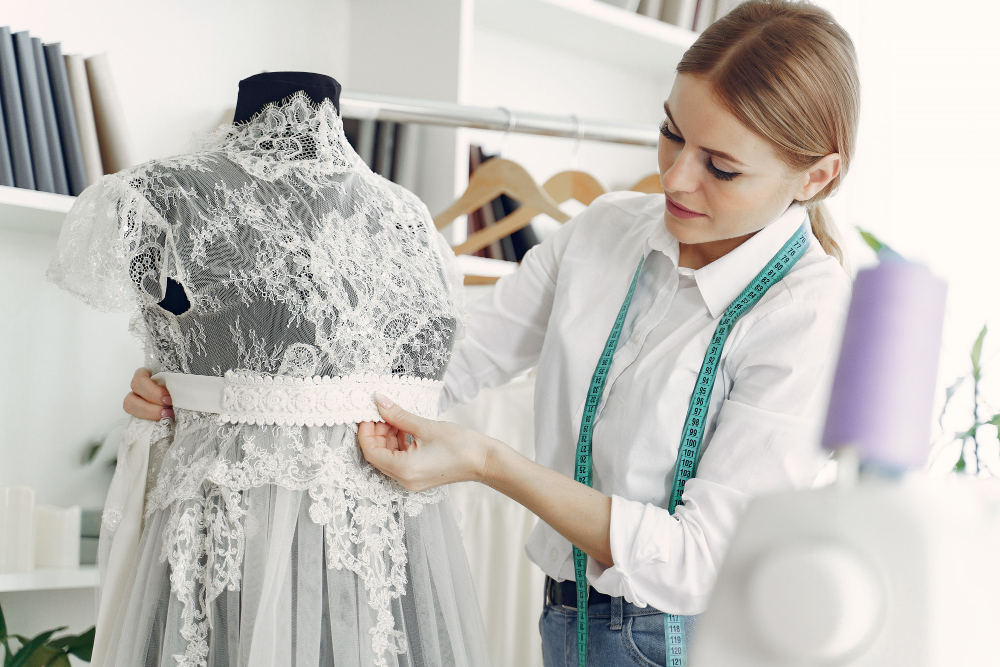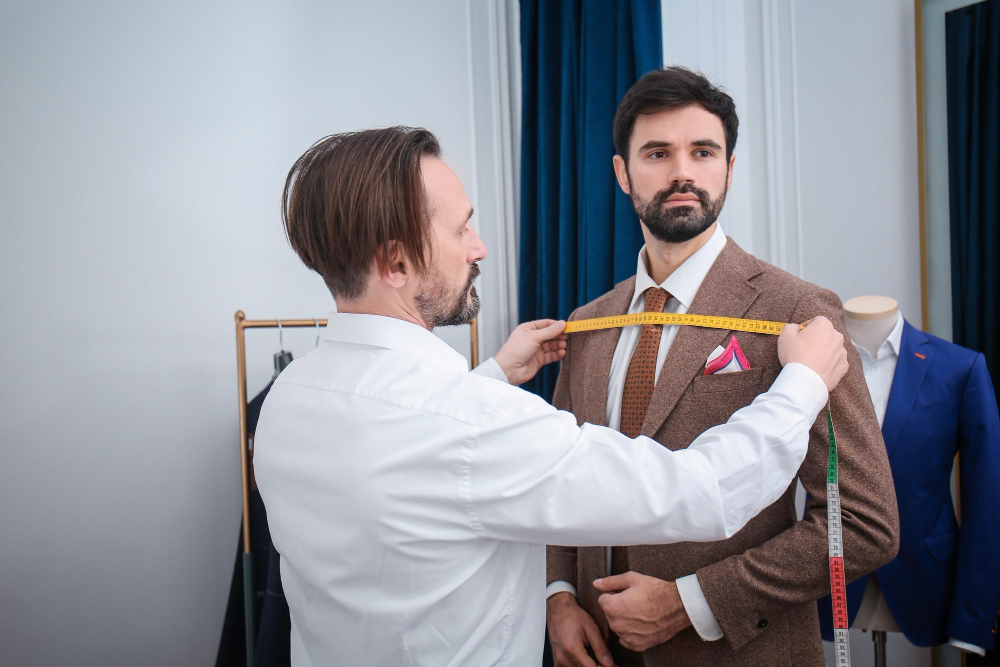our wedding dress is the most meaningful gown you’ll ever wear. It’s the one that will appear in photos, memories, and dreams for years to come. But before it’s picture-perfect, it usually needs a few tweaks. That’s where Bridal Dress Alterations come in the unsung heroes of wedding day perfection. In this guide, we’ll walk you through everything you need to know about wedding dress alterations, from timing to tailoring, so you walk down the aisle looking and feeling flawless.
Why Bridal Alterations Matter

Even the most luxurious wedding gown off the rack isn’t guaranteed to fit you like a glove. Everyone’s body is unique, and most dresses are designed for general sizing. Altering your gown ensures that the fit is customized to your shape, comfort, and vision.
Whether you’re adjusting the hemline, tightening the bodice, adding sleeves, or modifying the train bridal alterations help transform a beautiful dress into your perfect wedding dress.
Common Types of Wedding Dress Alterations
There are many ways a skilled tailor can perfect your gown. Here are the most common wedding dress alterations brides request:

1. Hemming the Dress
Most gowns are made long to accommodate brides of all heights. Hemming adjusts the length so your dress just grazes the floor, ensuring you can walk gracefully.
2. Taking In or Letting Out the Dress
Your body might fluctuate between buying your gown and your wedding date. A wedding dress tailor can take in the sides or let them out for a snug, comfortable fit.
3. Bustle Creation
A bustle lifts your train off the floor for easier movement during the reception. There are various bustle styles like the American, French, or ballroom — a good tailor will recommend the best one for your dress.
4. Reshaping the Neckline
If you’re dreaming of a sweetheart neckline instead of a high neck, alterations can make it happen. Reshaping the neckline is a transformative detail that adds personal flair.
5. Adjusting Straps or Sleeves
From delicate off-the-shoulder sleeves to elegant long lace arms, strap and sleeve adjustments are common requests in bridal dress alterations.
6. Adding Embellishments
Want to add a personal touch like lace, beads, or buttons? A skilled wedding dress tailor can upgrade your gown without compromising the original design.
When to Schedule Your Wedding Dress Alterations

Timing is everything when it comes to alterations & tailoring. Plan your first fitting 6-8 weeks before the wedding day. Here’s a general timeline:
6-8 Weeks Before: First fitting. Your tailor will evaluate the overall fit and discuss the changes needed.
4 Weeks Before: Second fitting. Most of the major alterations will be complete, and you’ll start seeing the final look.
2 Weeks Before: Final fitting. This is when everything should be nearly perfect. Bring your shoes and accessories.
1 Week Before: Optional final check, especially if you’ve had recent body changes.
By planning ahead, you ensure your tailor has enough time to make every adjustment with precision.
What to Bring to Your Bridal Fittings

To get the most out of your appointments, make sure you come prepared. Here’s what to bring:
Your Wedding Dress (of course!)
Shoes you plan to wear (for accurate hemming)
Undergarments you’ll wear on the big day
Accessories like veils or jewelry (to help envision the final look)
Wearing the right items during your fittings ensures your bridal alterations are as accurate and efficient as possible.
How Much Do Bridal Alterations Cost?
The cost of wedding dress alterations depends on how much work is needed and the complexity of the gown. Basic alterations like hemming and side adjustments might range from $100–$300. More intricate changes involving lace, beading, or re-structuring the bodice can increase the cost.
Always ask for an estimate during your first consultation so there are no surprises later on. Remember — you’re not just paying for thread and fabric; you’re investing in expert craftsmanship that ensures your dress fits perfectly.
Choosing the Right Wedding Dress Tailor

Not all tailors specialize in bridal gowns. Given the delicate fabrics, intricate details, and emotional importance, it’s crucial to work with someone experienced in bridal dress alterations.
Here are tips for choosing the right professional:
Experience Matters: Look for tailors with a portfolio of bridal work.
Read Reviews: Check online testimonials for insights into customer satisfaction.
Ask Questions: Don’t hesitate to ask about turnaround time, experience with your dress style, or suggestions to enhance your gown.
Schedule Early: Top tailors get booked quickly, especially during wedding season.
Bridal Alterations Tips Every Bride Should Know
Don’t Panic About Sizing: It’s common for gowns to need changes. Alterations exist for this reason.
Be Honest About Comfort: Speak up if a dress feels too tight or heavy.
Trust the Process: Alterations often require several visits. It’s all part of achieving the dream fit.
Avoid Last-Minute Weight Changes: Try to maintain a stable weight during the alteration period.
Keep an Open Mind: Sometimes, a tailor’s suggestion might enhance your dress in ways you hadn’t considered.
Conclusion: Perfect Fit, Perfect Day
Your wedding dress journey doesn’t end the moment you buy your gown it continues with thoughtful, skilled alterations & tailoring. Whether you’re adjusting the hem, reshaping the silhouette, or adding personal touches, the right bridal alterations will make all the difference.
If you’re looking for professional, stress-free wedding dress alterations from expert wedding dress tailors, trust Neartailors to bring your vision to life. With years of experience and a deep understanding of bridal fashion, Neartailors ensures that every stitch reflects elegance, comfort, and your personal style so you can walk down the aisle with confidence and joy.

